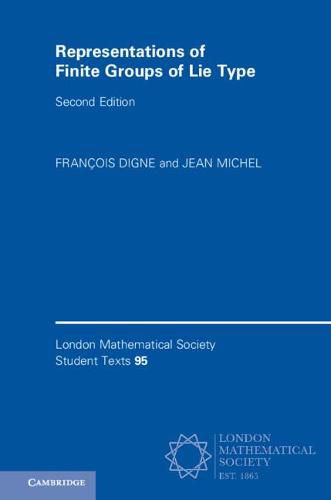Readings Newsletter
Become a Readings Member to make your shopping experience even easier.
Sign in or sign up for free!
You’re not far away from qualifying for FREE standard shipping within Australia
You’ve qualified for FREE standard shipping within Australia
The cart is loading…






On its original publication, this book provided the first elementary treatment of representation theory of finite groups of Lie type in book form. This second edition features new material to reflect the continuous evolution of the subject, including entirely new chapters on Hecke algebras, Green functions and Lusztig families. The authors cover the basic theory of representations of finite groups of Lie type, such as linear, unitary, orthogonal and symplectic groups. They emphasise the Curtis-Alvis duality map and Mackey’s theorem and the results that can be deduced from it, before moving on to a discussion of Deligne-Lusztig induction and Lusztig’s Jordan decomposition theorem for characters. The book contains the background information needed to make it a useful resource for beginning graduate students in algebra as well as seasoned researchers. It includes exercises and explicit examples.
$9.00 standard shipping within Australia
FREE standard shipping within Australia for orders over $100.00
Express & International shipping calculated at checkout
On its original publication, this book provided the first elementary treatment of representation theory of finite groups of Lie type in book form. This second edition features new material to reflect the continuous evolution of the subject, including entirely new chapters on Hecke algebras, Green functions and Lusztig families. The authors cover the basic theory of representations of finite groups of Lie type, such as linear, unitary, orthogonal and symplectic groups. They emphasise the Curtis-Alvis duality map and Mackey’s theorem and the results that can be deduced from it, before moving on to a discussion of Deligne-Lusztig induction and Lusztig’s Jordan decomposition theorem for characters. The book contains the background information needed to make it a useful resource for beginning graduate students in algebra as well as seasoned researchers. It includes exercises and explicit examples.